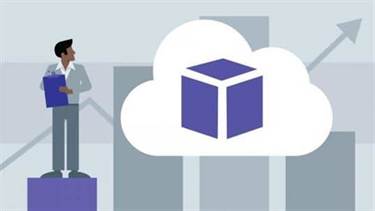However, they wish to get rid of constraints to manage the hardware infrastructure and software environment. Now that you understand what the public cloud could offer you, of course, you are keen to know what a private cloud can do. Companies that look for cost efficiency and greater control over data & resources will find the private cloud a more suitable choice.
Especially an eventually necessary termination process could be massively disturbed or is not possible without enormous costs and may be with loss of reputation for the cloud customer. The migration process to a CSP is divided into five phases that correspond to each other. Applying the Five-Phase-Model of secure cloud migration will ensure this. •A customer or tenant can achieve greater security control over more resources when moving from a Public cloud to a community cloud and again from a community cloud to a Private cloud.
Platform as a Service
Smart Analytics Solutions Generate instant insights from data at any scale with a serverless, fully managed analytics platform that significantly simplifies analytics. Telecommunications Hybrid and multi-cloud services to deploy and monetize 5G. Financial Services Computing, data management, and analytics tools for financial services. Cloud Build’s mission is to help GCP users build better software faster, more securely by providing a CI/CD workflow automation product for developer teams and other GCP services. To understand the meaning of cloud deployment, we have to take a step back and talk about Cloud Computing. In this article, we will explore the fundamentals of cloud – the cloud computing layers.

Instead of merging private and public clouds, multi-cloud uses many public clouds. Although public cloud providers provide numerous tools to improve the reliability of their services, mishaps still occur. It’s quite rare that two distinct clouds would have an incident at the same moment.
Serverless architecture for cloud native applications
3 Consider scalability to support future growth and device deployments. We cordially invite you to join our vibrant community and be part of a dynamic network of like-minded experts. Stay up to date on the latest product enhancements, industry trends and best practices shared by your peers. This is your chance to connect, collaborate, and unlock the full potential of SAP on IBM Cloud. So, the purpose of this blog is to acknowledge that some SAP project activities are time-consuming and costly without directly producing business value, while others do.
- Organizations can move data and applications between different clouds using a combination of two or more cloud deployment methods, depending on their needs.
- By bridging the public and private worlds with a layer of proprietary software, hybrid cloud computing gives the best of both worlds.
- Datasets Data from Google, public, and commercial providers to enrich your analytics and AI initiatives.
- People usually access these computing resources on demand over a private network connection set up by their company.
- Cloud deployment is the process of deploying an application through one or more hosting models—software as a service , platform as a service and/or infrastructure as a service —that leverage the cloud.
- PaaS is simple and very much convenient for the user as it can be accessed via a web browser.
Delivery pipelines with only one target do not incur a management fee. Cloud Deploy extends your DevOps ecosystem and plays with all the tools you love. Invoke Cloud Deploy from popular CI products using the CLI or API and federate approvals to ticketing systems of choice. Cloud Deploy supports separation of duties and concerns with formal release promotion approvals, accessible via the web console, CLI, or API and integrated with IAM. Passionate about building large scale web apps with delightful experiences.
Overall Analysis of Cloud Deployment Models
Blockchain Node Engine Fully managed node hosting for developing on the blockchain. Local SSD Block storage that is locally attached for high-performance needs. Mandiant Products and Services Cybersecurity technology and expertise from the frontlines. Cloud Data Loss Prevention Sensitive data inspection, classification, and redaction platform.

Cloud deployment is the process of deploying an application through one or more hosting models—software as a service , platform as a service and/or infrastructure as a service —that leverage the cloud. This includes architecting, planning, implementing and operating workloads on cloud. We will always consider the best cloud deployment model as per our requirements. Here are some factors which https://www.globalcloudteam.com/ should be considered before choosing the best deployment model. Shows, cloud computing primarily impacts how IT infrastructure and platforms are set up, deployed, and provisioned from an end-user perspective. The applications running in a cloud environment should be able to seamlessly interact with the cloud ecosystem, including other applications within or outside the cloud environment.
Multi-cloud disadvantages
The first call to Cloud Deploy creates a release, then arollout resource that’s used to deploy to the first target in the promotion sequence. Each subsequent call to promote the release results in a rollout to the next target. You can use any CI tool as long as it outputs types of cloud computing solutions for business one or more container images to provide to your Cloud Deploy delivery pipeline. The following is a description of what happens in a simple Cloud Deploy continuous delivery scenario. A name, which you use when referring to the delivery pipeline, and a description.
SaaS cloud deployment can be used either in the public cloud model or private cloud model. However, when a singular entity manages a hybrid cloud model, the SaaS deployment can also be used. There are virtual private clouds that function in the same way as private clouds do but in a public space. •Hybrid cloudIn a hybrid cloud, an organization makes use of interconnected private and public cloud infrastructure.
Review the differences before deploying to the live environment
Support open identity standards with pre-built integration kits, a self-service app portal, and a no-code visual orchestration platform. Your current IAM solution lacks support for out-of-the-box integrations and seamless automation. This means you have to use custom coding for any changes or updates–requiring additional heavy workloads that eat up IT resources. Your identity teams face a greater volume of access control requests and use cases than ever before. This is too much to manage on top of on-premises infrastructure, security, and upgrades.

Now, you can create simple delivery pipelines, targets, and releases directly within the Cloud Deploy console. Platform as a Service is a type of cloud computing that helps developers to build applications and services over the Internet by providing them with a platform. The cloud infrastructure is shared by several organizations and supports a specific community that has shared concerns (e.g., mission, security requirements, policy, and compliance considerations). It may be managed by the organizations or a third party and may exist on premise or off premise. It is ideal for companies wanting to maintain control over their business applications.
Deploying to a Virtual Cloud
With our PingOne Cloud platform, you have your choice of IAM deployment options. In fact, Ping can help no matter where you are on your digital transformation journey–regardless of your current IT environment. We offer IAM solutions that work across on-premise, hybrid, multi-cloud, multi-generational, or cloud platforms. On-premise deployments offer higher security measures than cloud deployments.
